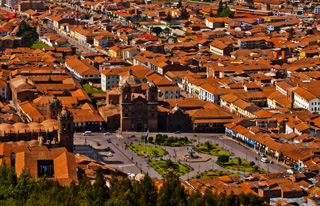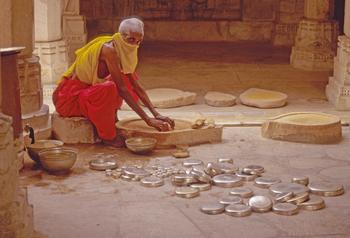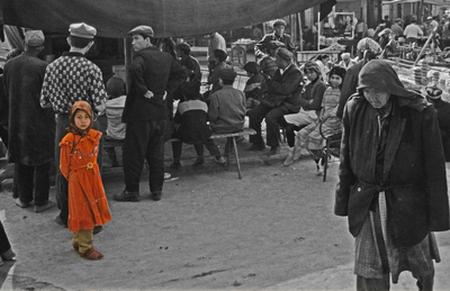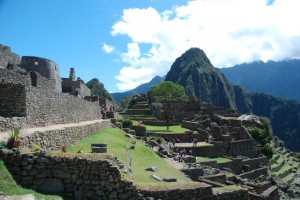Cuzco Conversion
I’ve now been in Cuzco for three days and I have to say I really like this city. People are friendly. The scenery is beautiful with red-tile roofs swirling across and up the sides of the valley like a terra cotta wine in a glass. There are 16th Century churches, camposinos on the corners, wild and wooly local markets and beautiful, quiet parks where I can sit in the shade and think. There are lovely old mansions surrounding the Plaza des Armas, that have their second floors converted to restaurants so you can sit in a screened alcove and peer out old carved windows at the colorful crowds in the plaza. I guess, that’s the theme for Cuzco – conversion.
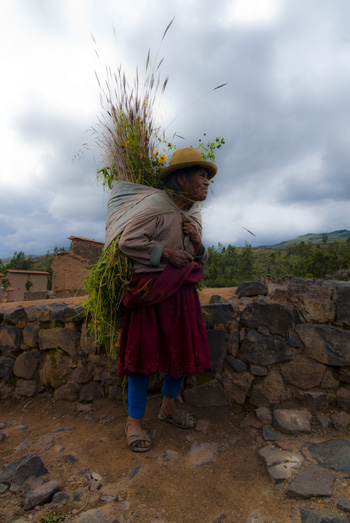
Today is Sunday and election day, but the city has been magnificently quiet all things considered. Stores were open (at least tourist ones were), and there were none of the rallies and rousing music I’ve come to associate with this election. I spent the morning climbing out of Cuzco proper to the ancient site of Sacsaywaman – one of the last strongholds of the Inca before the Spanish finally triumphed – and, in the ancient city plan (where streets formed a puma), Sacsaywaman was the part that formed the head.
It’s a long climb: first up steep, cobbled streets that are slippery enough cars must take a run to reach the top. Then follow the road until a cobbled path leads you into a pass between two of the hills surrounding the city. I kept telling myself that if I couldn’t do this then I had no business even contemplating Machu Picchu. The old heart was pumping and I was gulping in air, but I made it and, sweating, handed in my entry ticket.

There was virtually no one there at 8:30 in the morning. A few alpaca grazed the green grass between the two sets of ruins. The great stone towers are gone, but the zigzag line of battlements that form the teeth of the Puma of ancient Cuzco, still jut into the ancient field. Instead of ritual sacrifice or battle cries, there were birds and butterflies and horses grazing in the next field over.
I climbed to the top of the exposed rocks and sat there in the sun. A friend had asked me to soak up the feel of the place and I have to say all I felt was silence, just as yesterday, when I travelled out to the Sacred Valley and Pisac fortress, there was just the wind through the fallen stone.
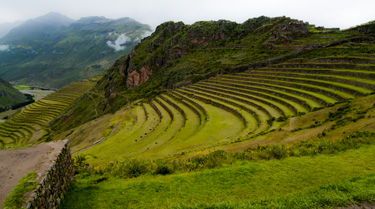
This was a great civilization, but it lasted only through a hundred years of expansion, before being blasted into oblivion by Pizzaro’s conquest. The Inca way was to take over a territory and subsume the local belief system into their own. Walking around Cuzco today I was more aware than ever of the thievery of conquest. Every cathedral, church and convent in this city is built on the remains of an ancient Incan palace or temple and they are built of stones robbed from said palaces and Sacsaywaman.
As I drove out to Pisac yesterday, my driver started talking about this. He is born of Spanish and Quechua (local Indian)-speaking parents, and I could hear the anger in his voice, which came back to me as I toured the great Cathedral of Cuzco. Every blasted surface of the place is gilded with gold or silver plate – probably robbed from the ancient temples. (Did you know that crazy old Puno was once called the City of Silver because during Incan times one street was actualy paved with it?) But most of all I was struck by the stark contrast to the ruins I’ve seen. Clean stone and narrow ways that give onto vistas. Perched on the heights, the ruins were automatically closer to Incan Apus and the sun.
The churches, however are encrusted with treasure and filled to the brim with figures of Christ and Mary of the mountains (an attempt to convert people from their worship of Pachamama- the earth mother), and I swear every other saint or maybe-saint known to man, as if said cathedral was looking for safety in numbers from what lurked beyond its doors. There is figure after figure in niche after niche, and altar after altar in chapel after cloister until I felt almost sick with the panoply and actually longed for the clean lines of the ruins.
I realized then that what the Spanish did in Peru, wasn’t really a matter of civilizing the people, but, like the Incas before them, was instead a matter of trading one form of Idolatry for another.
